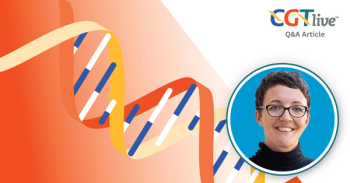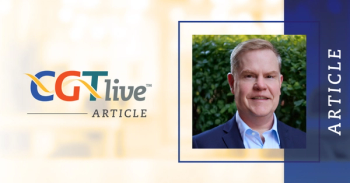
GD2-CAR T-Cell Therapy Yields Clinical Benefit in Glioma
While the lower IV dose was generally well-tolerated, the higher dose yielded cases of serious cytokine release syndrome.
Patients with diffuse intrinsic pontine glioma (DIPG) and spinal diffuse midline glioma (sDMG) experienced clinical benefit after treatment with sequential intravenous (IV) and intracerebroventricular (ICV) infusion of GD2-chimeric antigen receptor (CAR) T-cell therapy.1
These results, from a phase 1 study (NCT04196413), were presented at the
The phase 1, dose escalation trial has enrolled 13 participants, 11 of which were treated after 2 were removed due to rapid progression. Four patients (3 with DIPG and 1 with H3K27M sDMG) were treated with IV GD2-CAR Tat the lower dose level (1x106/kg), and 9 (7 with DIPG and 2 with sDMG) were treated at the higher dose level (3x106/kg) following lymphodepletion. All ICV infusions were at the same dose level of 10-30e6 GD2-CAR T-cells and occurred every 4 to 8 weeks for a maximum of 12 doses after IV infusion.
Nine of 10 evaluable patients experienced radiographic and/or clinical benefit after IV infusion and subsequently received a median of 4 ICV infusions (range, 1-6). Four patients continue to receive ICV infusion with continued clinical and radiographic benefit observed at 7, 8, 9.5, and 11 months. Notably, a 31 year old patient with sDMG experienced at least a 95% tumor volume reduction and a 17 year old patient with DIPG experienced at least a 98% pontine tumor volume reduction.
“Given these findings, we are launching a new arm to assess safety and activity and to define the recommended phase 2 dose for ICV delivery of GD2-CAR T without LD. Patients are eligible for up to 12 ICV infusions of GD2-CAR T administered every 4-6 weeks. Clinical benefit will be formally assessed using patient-reported outcomes. GD2-CAR T has the potential to transform therapy for patients with H3K27M+ DIPG/sDMG,” Majzner and colleagues wrote.1
The lower dose was generally well-tolerated, with no dose-limiting toxicities (DLTs). The higher dose level yielded 3 cases (2 DIPG, 1 sDMG) of grade 4 cytokine release syndrome (CRS) although these were successfully managed with tocilizumab, anakinra, and corticosteroids. All participants experienced transient tumor inflammation-associated neurotoxicity (TIAN) managed with anakinra, cerebrospinal drainage, or dexamethasone. ICV infusions were not associated with high-grade CRS although transient cases of fever, meningismus, headache, TIAN, nausea, and/or vomiting did occur.
Majzner and colleagues previously reported data from the first 4 patients treated in a paper published in Nature.2 These patients were treated at the lower dose level and thus many toxicities observed at the higher dose level were not observed.
“The promising early experience with GD2-CAR T cells for DIPG and spinal cord DMG described here sets the stage for further optimization of this approach for this historically lethal CNS cancer. This clinical trial will continue to treat patients with H3K27M+ DIPG and spinal DMG using GD2-CAR T-cell therapy to determine optimal dose, route and schedule, and to determine efficacy,” Majzner and colleagues wrote in Nature.2
REFERENCES
1. Majzner R, Mahdi J, Ramakrishna S, et al. Major tumor regressions in H3K27M-mutated diffuse midline glioma (DMG) following sequential intravenous (IV) and intracerebroventricular (ICV) delivery of GD2-CAR T cells. Presented at: AACR Annual Meeting, April 8-13, 2022; New Orleans, Louisiana.
2. Majzner RG, Ramakrishna S, Yeom KW, et al. GD2-CAR T cell therapy for H3K27M-mutated diffuse midline gliomas. Nature. 2022, 603: 934-941. doi:10.1038/s41586-022-04489-4
Newsletter
Stay at the forefront of cutting-edge science with CGT—your direct line to expert insights, breakthrough data, and real-time coverage of the latest advancements in cell and gene therapy.































